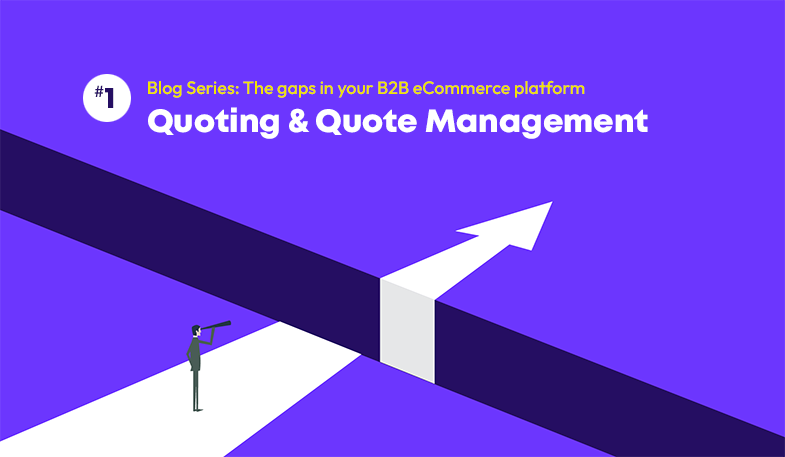Headless Commerce 101 for Managers

As a manager, you’ve likely had plenty of conversations with your marketing and technology teams about your eCommerce strategy. You may have heard frustrations about your eCommerce platform’s limitations, with teams noting how time-consuming and costly it is to deploy new marketing initiatives between your content management system (CMS) and your commerce engine. Poor coordination of these two eCommerce elements can be a big source of frustration for both marketers and developers alike.
Of course, you may have also heard your teams talk about new types of eCommerce software – solutions that are designed from the ground up to be flexible and adaptable to a variety of business systems. Headless commerce is one such solution, and it’s a strategy that managers should encourage their teams to explore.
Headless commerce is a pioneering approach to online selling that works a little differently than the eCommerce platforms you’ve tried in the past. We think headless commerce is the future of eCommerce platforms; it represents a new approach to eCommerce storefronts and sales channels that benefits both companies and consumers.
Creating better buying experiences for customers is critical for businesses that want to stay competitive. According to research, customer acquisition costs are rising for companies across the board – and merchants agree that one of the best ways to reduce these costs is to create a more robust digital experience that lets you better engage with your customers.
So how does headless commerce fit in? What makes it so much better than the commerce platforms we’re familiar with?
The Basics of an eCommerce Experience
Before we can explain what headless commerce is, we need to take a step back and look at the fundamental elements of your online store. Every storefront needs two basic components:
- An eCommerce platform
- A Content Management System
In the ideal eCommerce framework, these two elements work together to create your storefront. The CMS handles what customers see when they visit the site, and the eCommerce platform handles the product data, billing, payments, and other backend functions. Ideally, there is a clean line of responsibility between the systems. The CMS handles content delivery, layout, and design and makes requests to the eCommerce platform for data.
The problem is that these eCommerce platforms often can’t coordinate with different CMS options without substantial backend integration work. They weren’t designed with interoperability in mind, and each platform has tight integration between the commerce and content functions. In other words, with a traditional commerce platform, your selling options are constrained by the system you choose.
As such, both CMS providers and commerce providers offer a workaround by bundling the two together in pre-built commerce frameworks. This might sound like a practical approach that gives you the best of both worlds, but when we look at how this strategy works in practice, the drawbacks are clear.
Key Takeaways
- Every commerce experience requires both a content presentation layer and business logic layer to keep a store up and running.
- Traditionally-built commerce platforms are limited in their feature set and integration capabilities.
- Bundling the CMS and commerce functions offers a temporary workaround, but pre-built options are limited in their scope.
The Drawback of Integrated eCommerce Platforms
Under the above eCommerce framework, managers who want to start selling online are forced to choose between two options:
- Try to manage both commerce functions and content through the eCommerce platform;
- Manage content through the CMS with an additional plugin for eCommerce functions.
In both cases, you’re asking one system to handle two completely different functions – functions that the platforms were never designed to manage.
For example, many companies grow to love their CMS and later decide to add commerce functions on top. But these commerce functions aren’t integrated with the platform architecture; they must be added via plugin. You may find that you have to add multiple plugins and extensions just to gain basic inventory management, billing, and payment processing functionality. As you might imagine, this route leads to a platform that’s complicated and sluggish under the weight of so many extensions.
In all likelihood, this CMS/commerce plugin integration will tie your business to a single point of failure. Updates to the core platform get harder to make because you’re running the risk of breaking all of the plugins.
But the alternative isn’t much better. You may opt to go with a comprehensive commerce platform for your storefront, trusting that its built-in content management features will be enough to do the job. Anyone who’s worked with these restrictive layouts and limited feature sets can attest – this isn’t ideal.
In other words, the “all-in-one” style of eCommerce architecture may seem to offer the best of both worlds, but in reality, you’re getting the worst of both. The two components may work together—but they’re not built together.
As we’ll review, this distinction makes all the difference in setting up a modern eCommerce storefront.
Key Takeaways:
- Companies that run storefronts with pre-built commerce and content functions aren’t getting the most out of their platforms.
- Plugins for new features are possible to add – but these are supplementary extensions that aren’t built into the platform itself.
Why Headless Commerce Works
This brings us back to headless. A headless commerce platform performs similar functions as the commerce platforms detailed above, but with one key distinction: The platform’s content presentation layer (your CMS) is separated from the backend business logic layer (your commerce engine). This is what we mean when we say we’re taking the “head” off the commerce platform. When the front and back ends are separate, the platform’s architecture opens up and allows you to design your eCommerce storefront in whatever way makes the most sense for your business.
In practice, this means that developers can set up whatever kind of commerce experience they want. Remember, traditional commerce platforms are closely connected in front/backend functions and limit your customization options. But when you take the head off the platform and decouple these processes, you can connect your commerce engine to whatever CMS you want. This simple change brings a new level of flexibility to your online store.
Note that this isn’t a plugin or integration, as described above. Headless platforms let you build your preferred content presentation system directly into the platform architecture (with the help of a few headless commerce engineers, of course). It’s not an add-on; it’s a one-to-one connection that can be adjusted as needed to suit different business goals.
After all, every manager knows that staying competitive is a dynamic process. You may launch a website with a specific goal in mind only to realize that your strategy needs an overhaul. You may need to incorporate new products, brands, or promotions into your storefront to capitalize on market trends and better reach your customers.
With a traditionally-built commerce engine, these changes aren’t easy to manage. In many cases, you’d have to perform a major system overhaul – or even build a new platform from scratch – to work in new elements for your store. But with headless architecture, the system was built from the ground up to be flexible. New promotions are easy to incorporate and manage, no matter how many websites or online storefronts you’re running. For managers interested in building an adaptable and user-friendly online store, there’s nothing better.
Key Takeaways:
- The defining feature of a headless platform is the decoupling of the front and backend layers. This eliminates the platform constraints inherent to traditionally-built systems.
- Business managers can leverage the flexibility of headless architecture to create and deploy new marketing promotions with ease.
Get Familiar With the Benefits of Headless Commerce
Headless commerce can completely change the way you run your online store. Backed by a headless platform, managers can customize their selling experiences, test out new integrations, and pivot to new marketing strategies with ease. It’s not a new type of commerce system; it’s a re-imagining of the commerce strategy you’re familiar with that gives you the freedom to build and run your store exactly how you want.
Learn more about the benefits of headless commerce architecture and contact Ultra Commerce for a business assessment today.
Resource Center

A new blog series about the critical eCommerce capabilities missing in most eCommerce platforms for B2B companies. #1: Quoting & Sales Support

A closer look from the Ultra perspective on what we really mean when we talk about headless commerce and why it may not be right for every company.

Davis Art is now the only online K-12 publisher dedicated to the arts, creating top-notch curriculum and resources for art educators nationwide, all from the Ultra Commerce platform.
